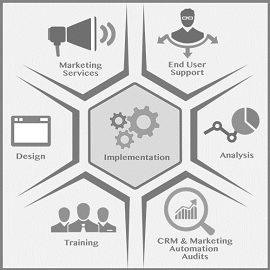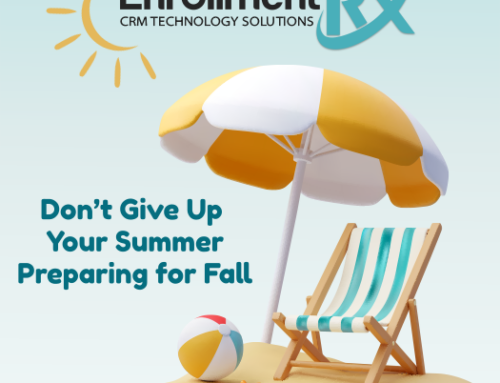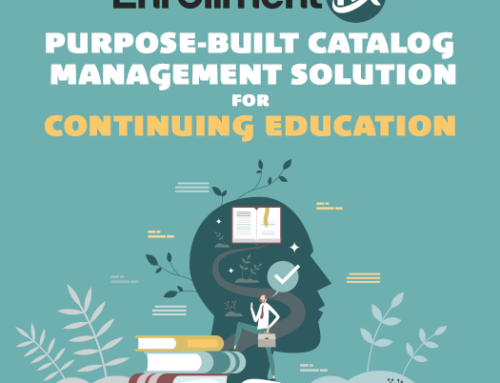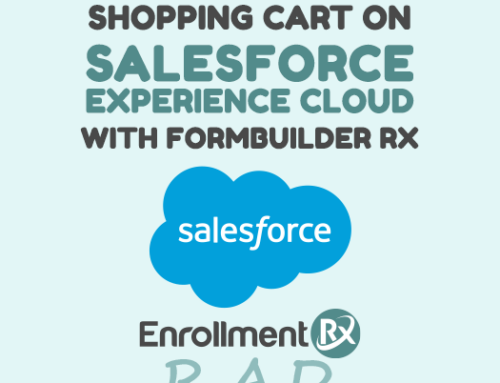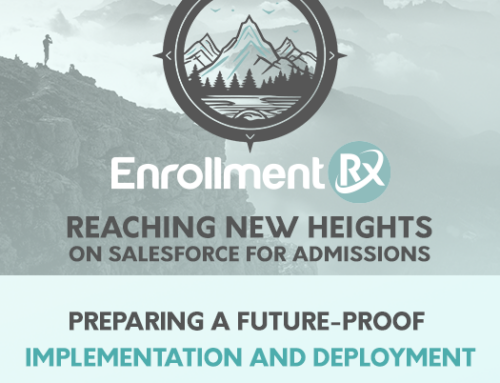You want to improve how you manage your constituent relationships. You want to be smart, efficient and strategic throughout the admissions and enrollment process. And you want to create a stellar experience for every prospect and every student. There’s no question: it’s time to make CRM a priority.
According to Gartner, CRM – constituent relationship management – systems are among the most strategic technologies that a higher ed CIO should plan for this year. CRM is now widely recognized for its ability to efficiently track and manage relationships with all constituents, driving fast, informed decision making and supporting the best possible customer experience.
But when you’re up against limited budgets and resources, how can you get your CRM up and running quickly in time for your busiest admissions season? In this blog, we lay out practical tips to help you create realistic expectations that will provide adequate runway for a successful CRM implementation.
#1 Appoint a CRM Champion
CRM is no longer a hobby for universities. It’s very much a part of your strategic plan and it needs to be taken seriously. Appointing and investing in a project manager – what we call the “CRM Champion” – is a critical success factor. This doesn’t have to be a full-time role; but on the flip side, it’s not something to be done in someone’s “spare time.”
“CRM is something that if you’re going to do right, you need to give yourself and your staff protected, ample time to put energy into,” said Jill Harman, Director of Admissions at Ohio University Heritage College of Osteopathic Medicine. “You want somebody thinking about it all the time so that you can get everything possible out of it.”
Your CRM Champion is someone who is empowered to get decisions made – no more analysis paralysis! This may be an in-house power user who bridges IT and admissions, and who can serve as an interpreter across departments. Or maybe it’s someone who isn’t necessarily an expert on the tech side, but regardless, would make a good candidate due to her enthusiasm and commitment to innovation and change.
#2 Create a Realistic Timeline
A successful implementation starts way before the actual implementation. To ensure success, it’s incredibly valuable to define a step-by-step timeline for the entire process: from the selection and purchasing process, to implementation.
Know which internal departments and leadership you can (and can’t) rely on and be sure to fill in any gaps with expertise from the vendor. Leave an adequate window for procurement and be honest with yourself if you’ve missed the window for a traditional, time-consuming RFP process. Being realistic at the onset about your timeline, especially if you’re lacking sufficient resources, and what you can accomplish within that, will set the project – and you – up for long-term success.
#3 Start Smart and Set Realistic Expectations
It’s absolutely essential to have a vision of how CRM plays into your long-term strategic plan and how you can apply it across the full student lifecycle. However, to minimize risk, you also need to focus your initial implementation – especially if you’re up against a tight deadline and limited resources. What’s a tight deadline? If your IT staff is already drowning and six months behind on other development requests, don’t expect them to support you going live in three months with a Full Lifecycle CRM request and comprehensive integration with your Student information System (SIS.)
This isn’t about instilling fear. It’s about knowing your limitations and setting realistic expectations.
A judicious approach to adopting CRM is to start smart! Where can you be most successful given budgets, timelines and resources? What is a relatively low-risk, low-budget focus area? Maybe you want to start with undergrad or graduate admissions, then expand into student services, retention and alumni. Regardless of where you decide to initially deploy, start with a manageable process that can drive fast, measurable results.
When Allegheny College first engaged with us, Associate Director of IT Jason Ramsey shared that the Enrollment Rx team guided them through the complexities of a new system with hands-on, strategic input and incredibly positive collaboration, kicking off a “full-on CRM revolution at Allegheny.” By starting “smart”, they were able to get up and running quickly without the risk of project derailment, while still setting the stage for expansion to full lifecycle CRM in future phases.
#4 Table Your Concerns about Integration
You heard it here first: integration is not as scary as you may think. How to standardize and integrate institutional data is top of mind for many schools we talk to. (Gartner, too, acknowledges this.) We certainly agree: integration between different enterprise systems is of utmost importance. But there are many different shades of integration; it’s okay to start without knowing all the answers. To be successful with your integration efforts, know what your goals are, how you’ll define success, and what your available resources, budget and timeline look like. Then pursue a phased approach, seeking out easy wins that will create project momentum.
It’s rare for us to encounter a client who has complete integration requirements defined before a project even begins. It starts with understanding your business. In most cases, integration is determined during the course of discovery and implementation – something you learn, alongside and with the full support of the vendor – as you go along.
What you do need to know from the start is whether a vendor is able to integrate on various levels, once you’re ready. Any modern CRM platform should be flexible and future proof; it should make integration easy by offering many different technical choices for integration and readily accommodate business processes, along with data flow, frequency and methodology requirements.
Once you start in on a CRM project, you’ll be in a better position to identify and address your integration needs. Unanswered integration questions shouldn’t derail your CRM journey right from the start.
#5 Talk to Your Peers
There’s no question that higher ed is a close-knit community, so tap into your peer network to help you make a decision on what CRM technology to evaluate and ultimately select. But don’t always call the references the vendor gives you. Instead, seek out your own references: do research on the vendor’s site, check out media articles and event speakers, connect via LinkedIn with those quoted in press releases. By embarking on your own due diligence, you’ll be assured a less biased sampling of customer references.
#6 Challenge the Status Quo – Approach Your Business Process Review with an Open Mind
Once you’re past the selection process, it’s time to rock the implementation. The business process review should be the launching pad that points the project in the right direction. It’s a time to candidly evaluate previous processes and challenge the status quo mentality. This will allow you to innovate and reimagine what you can do with your data, and get everyone on the same page towards a shared goal.
As Petia Whitmore, dean of Graduate Admissions at Babson College said about their CRM implementation: “Every time we envisioned how a process worked, we had the candidate experience in the center of the design.” For Whitmore, designing the CRM system with a focus allowed the team to never lose sight of their mission and make sure every business process evaluation and goal setting exercise mapped back to the institution’s larger mission.
Time and again, feedback from our clients underscores this sentiment:
- “If you’re going to embark on a CRM project, set aside time to look at business processes. Just because it’s always happened a certain way, doesn’t mean it has to happen that way now. Don’t just plug in old business processes to new features and functionality.” -Jill Harman, Director of Admissions, Ohio University Heritage College of Osteopathic Medicine
- “Identifying what the true business process ought to be in today’s world—versus what it’s come to be based on prior software limitations—is a fine art, but one that must be learned for a successful implementation of a new CRM.” – Deborah Gelch, CIO, Lasell College
- “We started our CRM implementation with the motto of Let’s Assume Nothing, breaking down the typical model of having to do things a certain way. For example, we ‘unpacked’ all of the steps we relied on for building a student application, stripping away unnecessary steps that only existed because of our previous structure… Put vendors’ feet to the fire during the evaluation phase, making sure they have the expertise in higher ed to support you in critically evaluating existing business processes and project goals.” – Jason Ramsey, Associate Director of IT, Allegheny College
The most successful and speedy CRM projects share two common characteristics: flexibility and focus. If you are prepared to move past hurdles to what can be done, you’ll be setting the stage for continued, incremental success that ties CRM together across the full lifecycle. And most importantly, make sure your CRM has good bones. With a strong foundation, your CRM will give you the building blocks to start small and grow big, in support of any new requirements in the future.
What roadblocks did your team hit? What made you successful?
If you’d like to set up a time to see a demo or discuss your CRM needs for your university or college, contact us at info@enrollmentrx.com.
And if you’re attending the 2015 National Conference on Student Recruitment, Marketing, and Retention this week in Boston, come visit us at booth #23.
